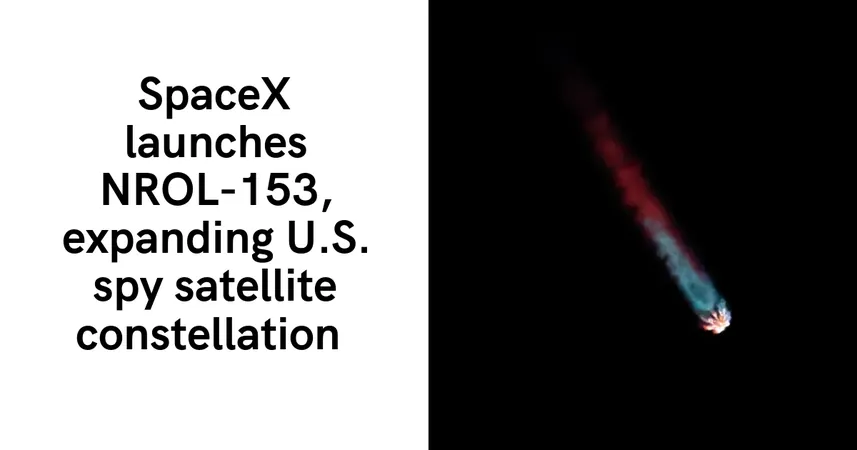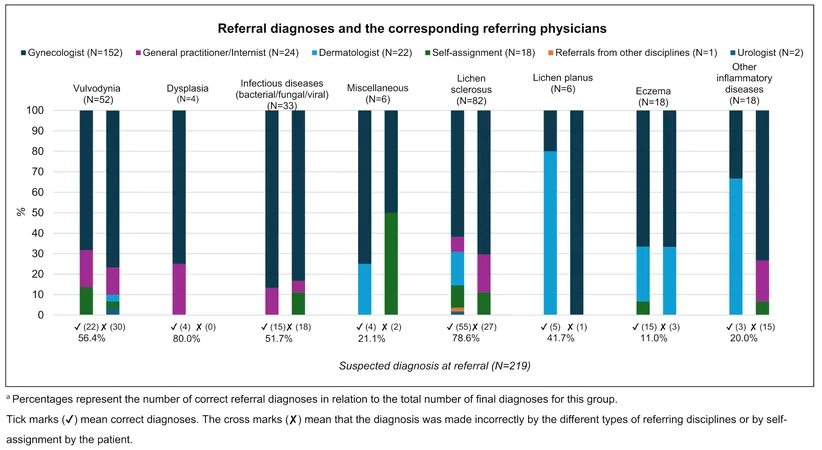
SpaceX Successfully Launches NROL-153, Boosting U.S. Spy Satellite Network!
2025-01-10
Author: Li
In a groundbreaking achievement for national security, SpaceX's Falcon 9 rocket successfully launched the National Reconnaissance Office's (NRO) NROL-153 mission on January 9. This pivotal launch is part of the U.S. government's efforts to enhance its satellite constellation in low Earth orbit (LEO) dedicated to intelligence and surveillance.
The rocket lifted off from Space Launch Complex-4 at Vandenberg Space Force Base in California at precisely 10:53 p.m. Eastern Time, carrying highly classified payloads aimed at improving U.S. intelligence operations. This mission marks not only the NRO's seventh initiative under its proliferated architecture strategy but also the first of 2025, showcasing the agency's commitment to a rapid expansion of its satellite capabilities.
The NROL-153 mission underscores the success of previous operations, particularly the NROL-149 launch in December, which has set a new cadence for the NRO's future missions. The agency stated, "Today’s mission demonstrates our ongoing efforts to strengthen intelligence, surveillance, and reconnaissance capabilities."
What makes the NROL-153 mission particularly noteworthy is its contribution to a growing network of smaller, more nimble satellites. This new strategy emphasizes resilience and responsiveness, allowing the U.S. to enhance its intelligence-gathering abilities in an ever-evolving threat landscape. Over the past year, the NRO has deployed nearly 100 new satellites to fortify these capabilities.
In 2025, the NRO has set its sights on approximately a dozen launches, with half focused on its innovative proliferated architecture. This approach marks a significant shift away from traditional, costly satellite systems towards a more scalable model featuring numerous smaller spacecraft. This evolution in strategy is designed to provide wider coverage, quicker data transmission, and improved resistance to potential threats such as enemy anti-satellite systems.
The satellites for the NRO's proliferated architecture are being constructed by SpaceX and Northrop Grumman, both key players in the U.S. defense ecosystem. While specifics about the payloads remain classified, they are reported to include advanced remote-sensing tools that will deliver real-time intelligence on adversary movements, bolstering the operational effectiveness of U.S. military forces.
Stay tuned as the NRO continues its ambitious plans for the future, potentially revolutionizing how the U.S. gathers and processes critical intelligence data from above!




 Brasil (PT)
Brasil (PT)
 Canada (EN)
Canada (EN)
 Chile (ES)
Chile (ES)
 Česko (CS)
Česko (CS)
 대한민국 (KO)
대한민국 (KO)
 España (ES)
España (ES)
 France (FR)
France (FR)
 Hong Kong (EN)
Hong Kong (EN)
 Italia (IT)
Italia (IT)
 日本 (JA)
日本 (JA)
 Magyarország (HU)
Magyarország (HU)
 Norge (NO)
Norge (NO)
 Polska (PL)
Polska (PL)
 Schweiz (DE)
Schweiz (DE)
 Singapore (EN)
Singapore (EN)
 Sverige (SV)
Sverige (SV)
 Suomi (FI)
Suomi (FI)
 Türkiye (TR)
Türkiye (TR)
 الإمارات العربية المتحدة (AR)
الإمارات العربية المتحدة (AR)